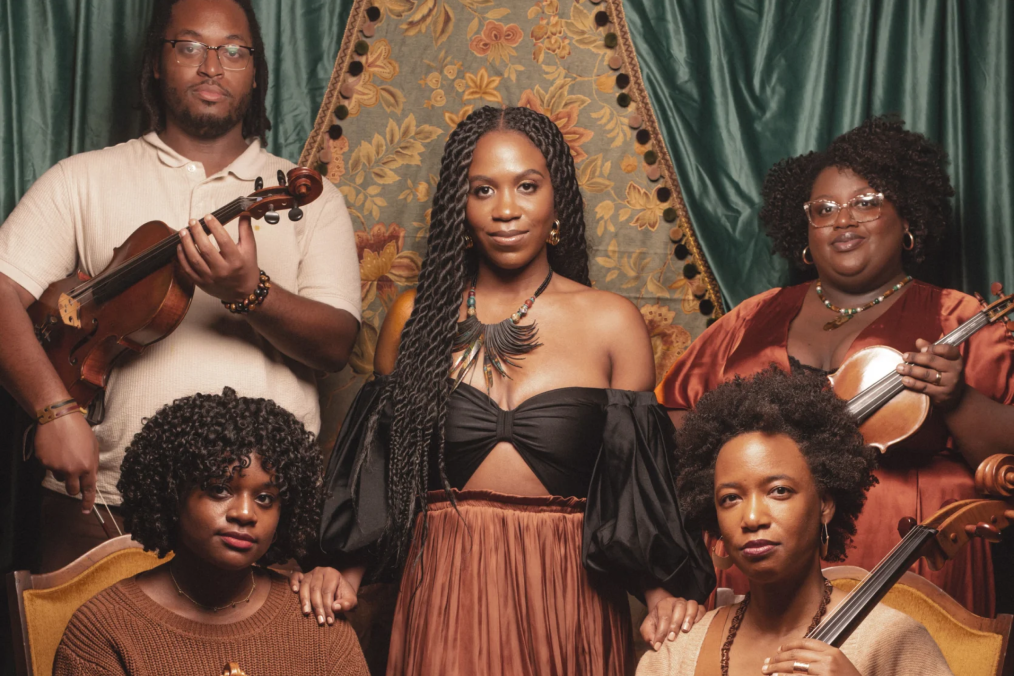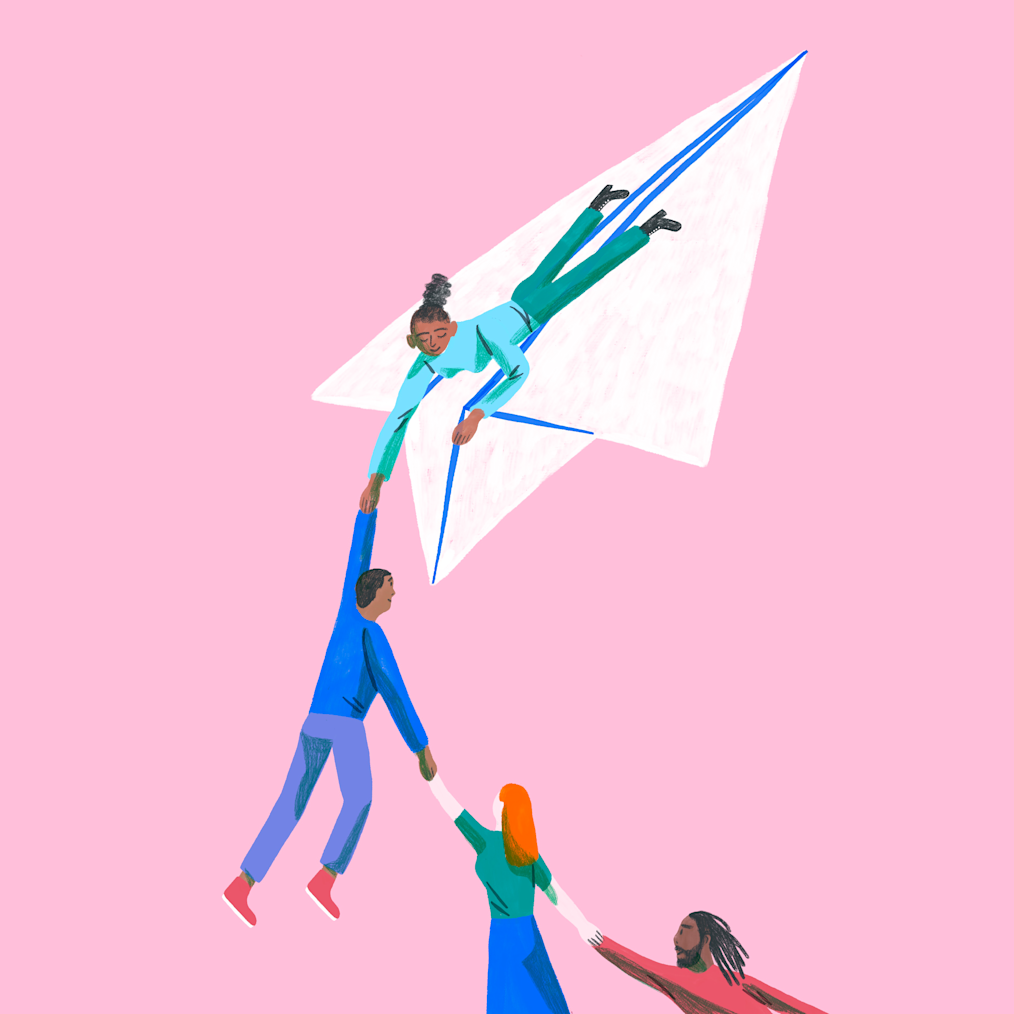From the campaign trail to the upcoming Obama Presidential Center, art has played an important role in the legacy of the Obamas. As global leaders, President and Mrs. Obama have used creative mediums to inspire and encourage people to engage more critically in our democracy.
As they traveled this path, hundreds of innovative minds joined their teams, helping build bridges between the artistic and the political. Today, many of those alumni have continued to work in artistic fields, using their creativity to provoke change and invite people to consider their place in the world. We recently spoke to three of these alumni; explore their stories and work below.
Gregg Ross (he/him/his)
Formerly: Field Organizer, Obama for America 2008; Regional Field Director, Obama for America 2012; NC State Organizer for the Presidential Inaugural Committee, 2013; Public Affairs Specialist, U.S. Department of Health and Human Services, 2015-2016
Currently: Press Officer for the U.S. Department of Health and Human Services, freelance photographer, poet
“ We need art to depict the specific details of the lived experiences outside of our own, to convey and transfer all that human emotion in order to reveal the universal in the foreign -- to show how alike we are through the differences.”
–Gregg Ross
1/5

2/5

3/5

4/5

5/5
How you got started with the Obamas
“I was living in New York City in the fall of 2007 when I first saw then-Senator Barack Obama deliver a speech in Washington Square Park. After the speech, I noticed a number of young people holding clipboards, asking the rally attendees to sign a petition to get the senator on the ballot for president. To me, watching them work the crowd was like watching organizers from the social justice movements of the sixties, and I decided I wanted to join them. What drew me to volunteering for the Obama campaign was the belief that there was a candidate who was organizing a new movement around him which could actually be effective at ending the war and advancing other social justice causes…By 2007, I was feeling rather disillusioned about the antiwar movement’s ability to affect any change and the overall efficacy of political activism in general. But here, with the early Obama campaign, it seemed a wholly new and truly transformative movement was emerging, being built by my own generation, no less! – a movement that could actually succeed! I was not going to sit it out; I had to get involved.”

The importance of art in our democracy
“Without art, we cannot fully understand the experiences of others, which means we cannot fully understand ourselves, which means we are at a loss as to how to function together as a society. Art is the great equalizer of people, the way to find commonality.”
“ Art is a great equalizer of the people, the way we find commonality.”
–Gregg Ross
Your advice for those who want to follow your path
“My advice is simple: never sacrifice your values for comfort; wager everything on the line for the type of life you want to live and the world you want to see—and then keep doing that all your days.”
Kolbie Blume (she/they)
Formerly: Constituent Letters and Writing Team, White House, 2014 - 2017
Currently: Artist, Author, and Online Educator
“ Creativity gives us the magical power of ‘and.’ I can be sensitive AND strong. I can be accountable AND empathetic. I can be a mess AND beautiful. I can be qualified AND still have more to learn.”
–Kolbie Blume


How you got started with the Obamas
“I interned in the White House Office of Presidential Correspondence (OPC) from January to May 2014, on the writing team, and I was lucky enough to be asked to interview for a full-time staff position. I joined OPC as a staff member in September 2014, originally in the Gift Office, where I handled priority gifts and custom gift thank-you letters. From there, I moved to the writing team, where I managed the custom responses for the 10-Letters-a-Day portfolio.”
The importance of art in our society
“So many people don't pick up a paintbrush because they believe to their core they're not qualified or ‘good enough’ in large part because we've all been taught through many different sources that the purpose of life is proving your value. But what if our value as humans didn't have to be proven? What if curiosity and courage, rather than output and performative achievements, were the most important metrics for meaning?”


Your advice for those who want to follow your path
“The biggest mistake anyone can make on their journey to their dreams is to give up too early because they believe they're just not good enough or not "qualified." What they don't know is that the only way to get ‘qualified’ is to keep doing it messy -- because those lessons are what will lead to their biggest breakthroughs.”

A video created by Kolbie on mental health and painting entitled, “Easy Abstract Landscapes”
Myesha Ward (she/her/hers)
Formerly: Deputy Director of Delegates, Obama for America 2008; Deputy Assistant United States Trade Representative for Intergovernmental Affairs and Public Engagement, Obama Administration
Currently: Director of Civic Engagement and Government Affairs, Lucas Museum of Narrative Art
“ Art and creativity have the power to change the world. Images move us to act, feel, and to respond to issues large and small. Art and artists are usually the first to address issues of injustice and to bring joy to communities across a wide spectrum.”
–Myesha Ward
How you got started with the Obamas
“...I joined the Obama campaign in March 2007 and worked at the Chicago Headquarters. My first job with the campaign was as the Deputy Director of Delegates. As a part of the political team my job was to garner the support of superdelegates for Senator Obama and oversee our team of delegate trackers…After the inauguration I joined the administration as a Deputy Assistant United States Trade Representative for Intergovernmental Affairs and Public Engagement. I worked with all levels of government to promote the President's trade agenda as well as working with labor, non-profits, civil society, business groups and other organizations.”
The importance of art in our democracy
“Art has been used from everything from ads to political cartoons that are used to push or support an agenda that can hold up democracy or can be used to denigrate groups of people and ultimately pull our country apart.”

Your advice for those who want to follow your path
“I spent most of my career in politics working on campaigns and 20 years ago I would not have imagined that I would be working at an art museum, immersed in arts and culture. But the skills I learned working on campaigns I found could be used anywhere.”

Here is where you can see more stories:
View all stories
- First Look
- The Arts

- The Arts
- Leaders

- The Arts
- Presidential History

